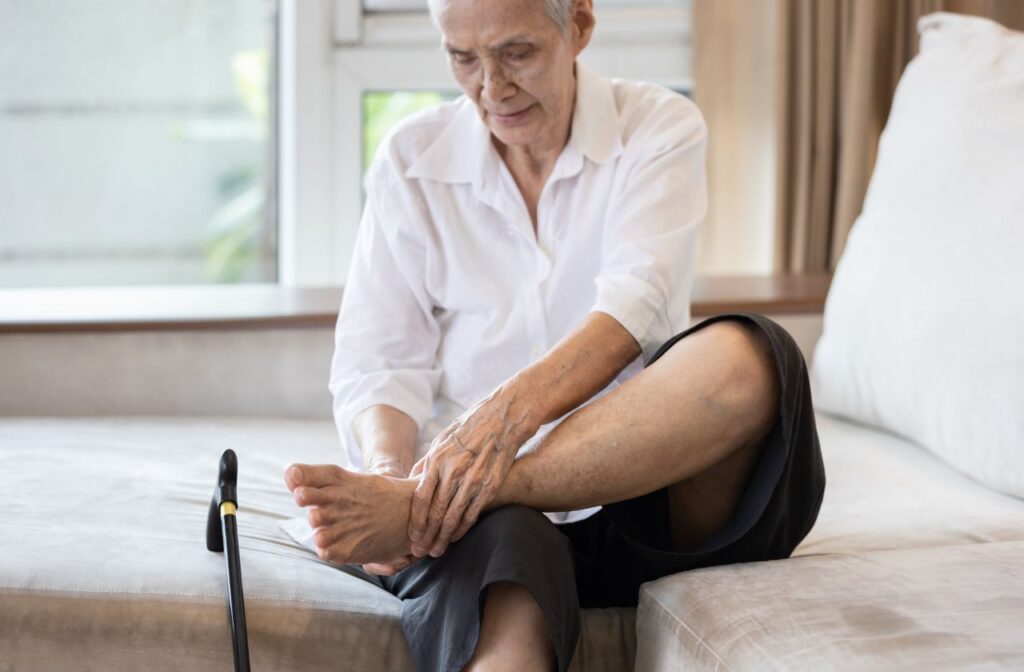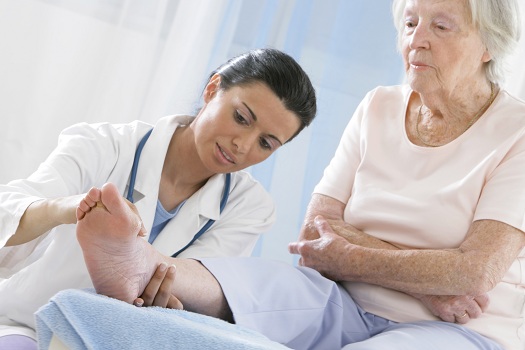Senior Foot Care at Home: Essential Tips for Health and Comfort
Senior Foot Care at Home, Foot care is a vital part of senior health, yet it is often overlooked. As people age, they are more susceptible to foot-related issues due to decreased circulation, arthritis, and mobility limitations. Senior Foot Care at Home provides an effective solution, allowing seniors to receive essential foot care in the comfort of their homes. This approach not only improves physical health but also boosts confidence, comfort, and quality of life.
In this guide, we’ll explore the importance of Foot Care for Seniors, practical tips for maintaining healthy feet, and answers to common questions regarding foot care at home.

With age, foot care becomes a critical component of maintaining overall health. Feet bear the weight of the body, and any discomfort or foot problem can impact mobility, balance, and quality of life. Here’s why Foot Care for Seniors is essential:

Providing Senior Foot Care at Home doesn’t require extensive equipment or expertise. With a few basic tools and an understanding of senior-specific needs, caregivers or family members can offer effective foot care. Here are some steps to maintain foot health for seniors at home:
Cleanliness is the foundation of foot care. Seniors should wash their feet daily with mild soap and warm water, then dry thoroughly, especially between the toes. Moist areas are prone to fungal infections, so drying is essential to prevent issues like athlete’s foot. After drying, consider applying a gentle, unscented moisturizer to keep skin soft and prevent cracking, which can lead to infections.
Proper nail care is essential for preventing ingrown toenails and maintaining comfort. Using clean, sharp nail clippers, trim nails straight across and avoid cutting too short. If nails are thick or difficult to cut, soaking the feet in warm water for 10-15 minutes can soften them, making trimming easier.
Regularly inspecting the feet for abnormalities is crucial in Foot Care for Seniors. Look for signs of redness, swelling, blisters, cuts, or changes in skin color. If any sores or injuries are found, they should be cleaned, and a healthcare provider should be consulted if they don’t heal promptly. For seniors with diabetes, extra vigilance is needed as they are at a higher risk for slow-healing wounds.
Wearing well-fitted, supportive shoes is essential for foot health and balance. Seniors should avoid shoes with narrow toes or high heels, as these can cause pain and instability. Shoes should have good arch support, cushioning, and enough room for the toes. Additionally, seniors should replace worn-out shoes to prevent uneven pressure that can lead to discomfort and foot problems.
Moisturizing prevents dry skin and cracking. Applying lotion to the tops and bottoms of the feet (but not between the toes) keeps skin hydrated without creating a moist environment that can encourage fungal growth. Look for gentle, fragrance-free moisturizers designed for sensitive skin to reduce the risk of irritation.
Exercises like stretching and rotating the ankles help improve flexibility and circulation, which is beneficial for overall foot health. These exercises can be as simple as wiggling the toes, moving the ankles in circles, and stretching the feet. Even short daily sessions can make a difference, especially for seniors who are less active.
Some aspects of Senior Foot Care at Home may require professional assistance, especially for seniors with diabetes, severe arthritis, or mobility limitations. A podiatrist can handle complex nail care, treat ingrown toenails, and address any other issues that are difficult to manage at home.

Foot health plays a significant role in preventing falls, one of the most common and dangerous issues facing the elderly. Here’s how Foot Care for Seniors contributes to stability and safety:
Answer: Ideally, seniors should include basic foot care in their daily routine, with more intensive care at least once a week. Daily practices include washing and drying feet thoroughly, inspecting for any issues, and moisturizing. Weekly or bi-weekly practices can include nail trimming and more thorough foot checks. For seniors with diabetes or circulation issues, foot checks may need to be more frequent, as they are at higher risk for foot-related complications.
Answer: Professional help may be necessary if a senior experiences foot pain, has difficulty trimming nails, or shows signs of foot problems like swelling, redness, ingrown toenails, or skin discoloration. Seniors with diabetes, neuropathy, or other circulation problems should see a podiatrist regularly to prevent serious complications. If caregivers notice any slow-healing sores, loss of sensation, or structural changes in the feet, it’s a good idea to consult a healthcare provider to ensure proper treatment and avoid further issues.

Caregivers play a crucial role in supporting seniors’ foot health. Here are some tips for providing effective Foot Care for Seniors:
Senior Foot Care at Home is an essential part of healthy aging, supporting mobility, comfort, and quality of life. By following these guidelines, seniors and their caregivers can create a simple yet effective foot care routine that prevents issues and promotes wellness. Whether it’s through daily hygiene, regular nail trimming, or gentle foot exercises, prioritizing foot care can have significant benefits for seniors’ physical and emotional well-being.